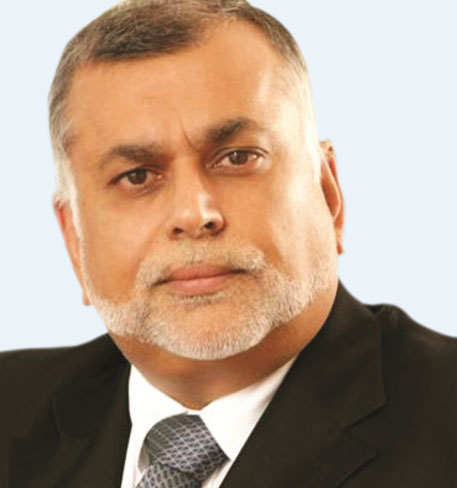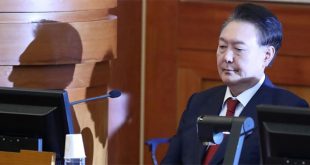
How Crane Bank was `killed’
To make their point, critics of the central bank point to a series of actions that officials at BoU made that “killed” Crane Bank.
On July 27, 2016, Bagyenda wrote to the Board of Directors of Crane Bank. Her letter followed a meeting between BoU officials and Crane Bank representatives at which issues of Crane Bank’s capital inadequacy were discussed. Following that meeting, Crane Bank wrote informing BoU that it had increased its core capital from negative Shs16.10 billion to Shs62 billion.
To meet the required capital requirements, however, Bagyenda insisted that the Bank directors needed to inject an additional Shs. 87.4 billion. This was on July 27, 2016.
Sudhir requested BoU to exercise its mandate as the lender of last resort and advance him that money.
But BoU refused. Sudhir offered to secure the loan from BoU with any of his properties of their choice. Instead, BoU imposed further restrictions on the bank’s ability to do business. Crane Bank was stopped from doing all things that a bank does to make money. It was blocked from issuing letters of credit, bank guarantees, and other instruments from which it could have raised cash.
As a result, Crane started losing about Shs600 million a month. And because the bank could no longer issue these instruments, businesspeople started moving their money to other banks who could issue them with these instruments.
In effect, BoU’s intervention had made a bad cash flow problem turn into a worse liquidity crisis for Crane Bank. This was followed by a run on the bank by anxious customers.
Even at this point, The Independent has learned, many international investors were still attracted because the bank was still an attractive investment.
Only a couple of years ago, it had been one of the top five most profitable banks in Uganda and was still the fourth largest bank by assets – up to Shs1.8 trillion in 2015.
And because it had posted losses the previous year, Crane Bank had a tax credit of $40 million – meaning if an investor bought it, they would not pay taxes worth up to $40 million even if it made profits.
Instead of courting these investors, the Central Bank opened a bidding process of a week, which included the 2016 Christmas holidays. One of the investors The Independent spoke to said at the time, it wasn’t possible to coordinate boards of bodies in Europe and Asia that were interested in the bank.
The investors failed to bid and BoU proceeded to sell the Bank to DFCU.
But it did not even sell the bank as a business as had been proposed by some of those involved. Instead, DFCU offered to buy only some of the good loans at Shs200 billion, which it would pay over a period of two and a half years.
Then the Central Bank commissioned it to collect from the bad loans and take a commission.
Sudhir was kept out of all this although at the time of takeover his share capital in Crane Bank was Shs320 billion. BoU cancelled the funds to zero because, it claimed, the bank had bad loans of over Shs700 billion.
To cover these bad loans, BoU initially asked Sudhir to pay US$60 million. They later increased the figure to $90 million.
In all this, BoU was forced to inject Shs470 billion, which is about four-times the US$30 million Sudhir was initially asking for.
According to sources, the cost of running Crane Bank under BoU jumped to Shs125 billion in three months from the Shs96 billion Sudhir spent to run it for the whole year 2015.
Central bank Governor, Tumusiime Mutebile, his deputy Louis Kasekende and former Executive Director Banking Supervision, Justine Bagyenda, who were party to the negotiations and meetings surrounding the take over and eventual sale of Crane Bank, are on the spot.
The Independent has written to all the three requesting interviews over the same. By press time, it was only Kasekende who had responded. In brief, he declined to comment.
If these three officials refuse to account to the public for their actions, The Independent understands that nobody else at BoU can comment.
They need to respond specifically to revelations early this year by an investigation by the U.S. Federal Bureau of Investigations (FBI) that have not helped matters.
It revealed that an official referred to as the Vice President of Bank of Uganda, who is suspected to be Bank of Uganda Deputy Governor Louise Kasekende, had told the wife of Foreign Minister Sam Kutesa that a local bank was up for sale – this was on October 13—a week before BoU took over Crane Bank.
Time line
2014—Crane Bank posts profit of Shs 50.6bn
2015—Crane Bank posts loss of Shs 3.1bn—NPAs shoot to Shs 142.3bn from Shs 19.3bn a year earlier.
2016 June—NPAs stand at 14.5 per cent. Other banks are in bad shape too but can call on international backers. Crane Bank defaulters are chocking, ask for a bail out of Shs. 1.8 trillion.
2016 July 1—BoU slaps restrictions on Crane Bank blocking it from carrying out usual business after months of reassuring the public
2016 July 11—BoU team meets with Crane Bank officials to discuss way forward
2016 July 22—Crane Bank informs BoU it has injected over Shs.70bn into the bank, requests BoU for a loan amongst other recaptalisation plans
2016 July 27—BoU’s Bagyenda declines Crane Bank’s plans, says BoU would not wave restrictions
2016 October 20—BoU takes over Crane Bank
2017 January 24—Hands over Crane Bank to DFCU, says Crane Bank liabilities exceeded its assets, was insolvent
2017 August 17—DFCU declares profit of Shs.115 bn compared to 23 the previous year
2018 February—Mutebile fires Bagyenda, reshuffles staff, BoU—DFCU agreement leaks
2018 February—Bagyenda petitions IGG, IGG blocks staff reshuffle
2018 March—President Museveni meets BoU officials, asks officials to solve issues amicably, settle with Sudhir out of court
2018 March 29—DFCU declares profit of Shs. 127bn
2018 April—Parliament’s COSASE asks Auditor General to investigate BoU over funds injected into Crane Bank and sale to DFCU
 The Independent Uganda: You get the Truth we Pay the Price
The Independent Uganda: You get the Truth we Pay the Price



